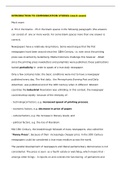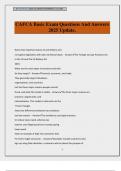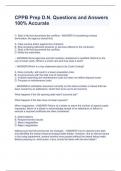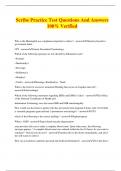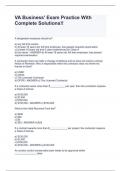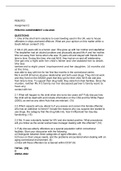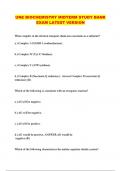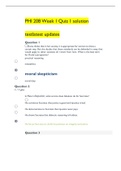INTRODUCTION TO COMMUNICATION STUDIES (mock exam)
Mock exam
A. Fill in the blanks – fill in the blank spaces in the following paragraphs (the answers
can consist of one or more words. For some blank spaces more than one answer is
correct).
Newspapers have a relatively long history. Some would argue that the first
newspapers have been around since the 15th Century, i.e. ever since the printing
press was invented by Gutenberg. Media historians challenge this however. Albeit
since the printing press newsletters and pamphlets were published, these publications
lacked periodicity in order to speak of a true daily newspaper.
Only a few centuries later, the basic conditions were met to have a newspaper
published every day. The first daily, the Pennsylvania Evening Post and Daily
Advertiser, was published end of the 18th Century when in different Western
countries the Industrial Revolution was unfolding. In this context, the newspaper
could develop rapidly because of the interplay of:
- technological factors, e.g. increased speed of printing process;
- economic factors, e.g. decrease in price of paper;
- cultural factors, e.g. the increase in literacy levels; and
- political factors, e.g. the rise of liberalism.
Mid 19th Century, the breakthrough followed of mass newspapers, also called the
“Penny Press”, because of their increasingly cheaper price. In the 20th Century
newspapers could be considered a true mass medium across the world.
The parallel development of newspapers and liberal parliamentary democracies is not
coincidental. The press is seen as a fourth estate or watchdog, which means that –
amongs other things – it reports on and controls the functioning of parliament and
, government. According to Jürgen Habermas, the press is an essential part of a well-
functioning public sphere (a concept Habermas is well known for). Herein, activities
of the state are critically and rationally discussed to contribute to the general
interest.
Whereas Habermas stressed the positive role of newspapers to support rational
debate, Marshall McLuhan argues that in a literary society the focus is on hot / cool
media, predominantly extending only one sense, namely eyesight. The associated
rise in speed and efficiency of communication has led to a weakening of other senses.
In the second part of the 20th Century however, rationality and linearity in literary
society is under pressure according to McLuhan. In his view, the rise of electronic
media supports a return to emotions and ritual media experiences, on a global scale
moreover, which is captured by his well-known concept of a global village being
developed in the current neotribal electronic society.
B. Multiple choice
1. The concept of creative consumption fits
1. an agency-oriented conflict approach
2. an agency-oriented consensus approach
3. a structure-oriented conflict approach
4. a structure-oriented consensus approach
_______________________________________________________________________________________
_____
2. Harold Lasswell’s propaganda theory and strategy is
1. an agency-oriented conflict approach
2. an agency-oriented consensus approach
Mock exam
A. Fill in the blanks – fill in the blank spaces in the following paragraphs (the answers
can consist of one or more words. For some blank spaces more than one answer is
correct).
Newspapers have a relatively long history. Some would argue that the first
newspapers have been around since the 15th Century, i.e. ever since the printing
press was invented by Gutenberg. Media historians challenge this however. Albeit
since the printing press newsletters and pamphlets were published, these publications
lacked periodicity in order to speak of a true daily newspaper.
Only a few centuries later, the basic conditions were met to have a newspaper
published every day. The first daily, the Pennsylvania Evening Post and Daily
Advertiser, was published end of the 18th Century when in different Western
countries the Industrial Revolution was unfolding. In this context, the newspaper
could develop rapidly because of the interplay of:
- technological factors, e.g. increased speed of printing process;
- economic factors, e.g. decrease in price of paper;
- cultural factors, e.g. the increase in literacy levels; and
- political factors, e.g. the rise of liberalism.
Mid 19th Century, the breakthrough followed of mass newspapers, also called the
“Penny Press”, because of their increasingly cheaper price. In the 20th Century
newspapers could be considered a true mass medium across the world.
The parallel development of newspapers and liberal parliamentary democracies is not
coincidental. The press is seen as a fourth estate or watchdog, which means that –
amongs other things – it reports on and controls the functioning of parliament and
, government. According to Jürgen Habermas, the press is an essential part of a well-
functioning public sphere (a concept Habermas is well known for). Herein, activities
of the state are critically and rationally discussed to contribute to the general
interest.
Whereas Habermas stressed the positive role of newspapers to support rational
debate, Marshall McLuhan argues that in a literary society the focus is on hot / cool
media, predominantly extending only one sense, namely eyesight. The associated
rise in speed and efficiency of communication has led to a weakening of other senses.
In the second part of the 20th Century however, rationality and linearity in literary
society is under pressure according to McLuhan. In his view, the rise of electronic
media supports a return to emotions and ritual media experiences, on a global scale
moreover, which is captured by his well-known concept of a global village being
developed in the current neotribal electronic society.
B. Multiple choice
1. The concept of creative consumption fits
1. an agency-oriented conflict approach
2. an agency-oriented consensus approach
3. a structure-oriented conflict approach
4. a structure-oriented consensus approach
_______________________________________________________________________________________
_____
2. Harold Lasswell’s propaganda theory and strategy is
1. an agency-oriented conflict approach
2. an agency-oriented consensus approach

